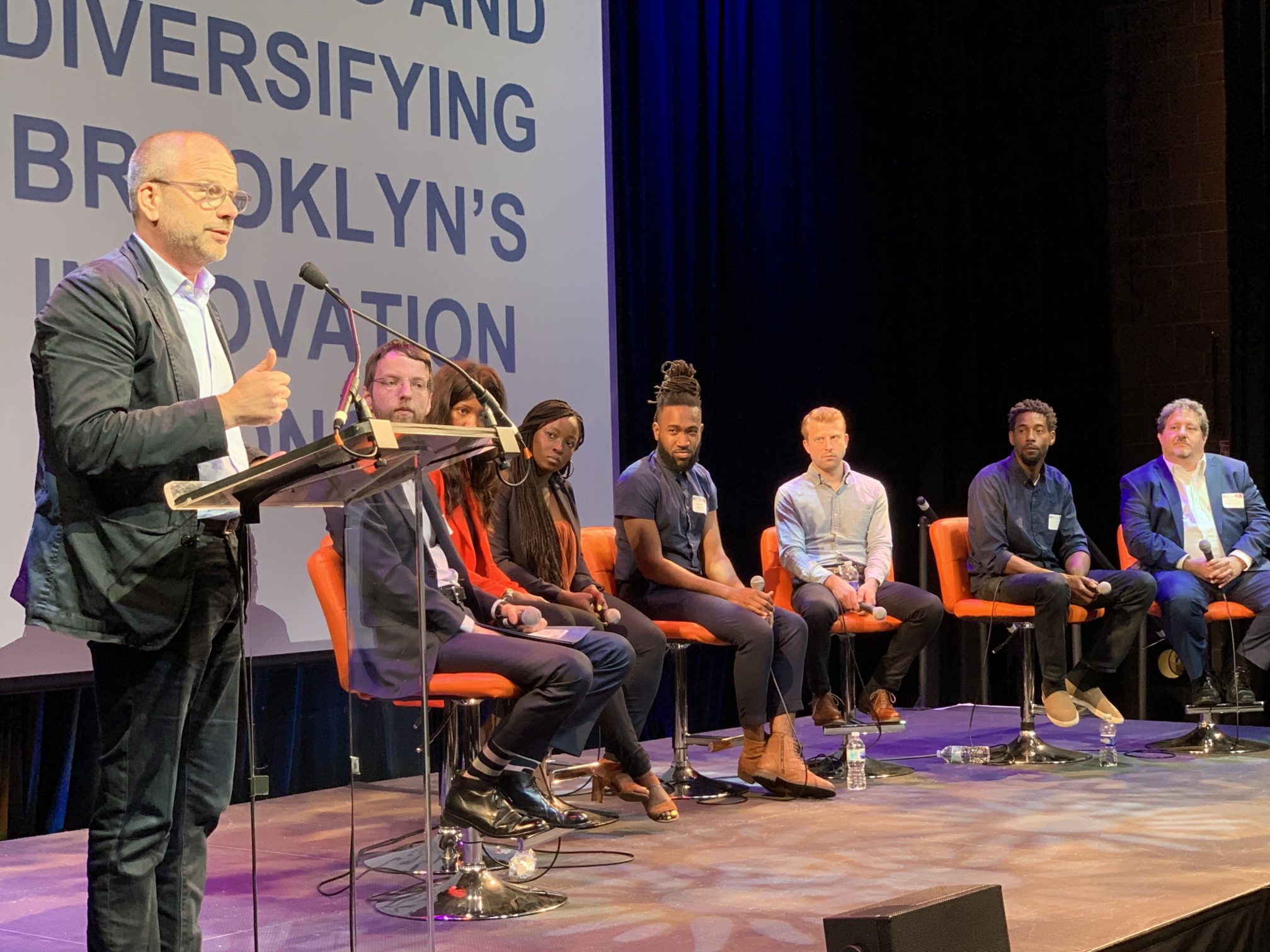How to spread Brooklyn’s ‘Innovation Economy’
Industry big-wigs think on how to keep the momentum.

Real estate and floor space, infrastructure, diversity and creative “collisions” are some of the reasons Brooklyn is so attractive to start-ups — but if the city doesn’t fix some nagging problems, that growth could slow, according to experts at a symposium on Friday sponsored by the Center for an Urban Future.
Two panels packed with luminaries from Brooklyn’s technology and creativity scene drew more than 250 heavy hitters to BRIC in Downtown Brooklyn for Center for an Urban Future’s conference on Brooklyn’s growing “innovation economy.”
Though Brooklyn lags behind Manhattan in the sheer number of tech and creative start-ups, the growth of innovative companies here — a whopping 155 percent over the last decade — outpaces their growth in Manhattan and most other cities. Maintaining that growth was the topic of the first panel, moderated by Jonathan Bowles, executive director of Center for an Urban Future.

Brooklyn Boro
View MoreNew York City’s most populous borough, Brooklyn, is home to nearly 2.6 million residents. If Brooklyn were an independent city it would be the fourth largest city in the United States. While Brooklyn has become the epitome of ‘cool and hip’ in recent years, for those that were born here, raised families here and improved communities over the years, Brooklyn has never been ‘uncool’.